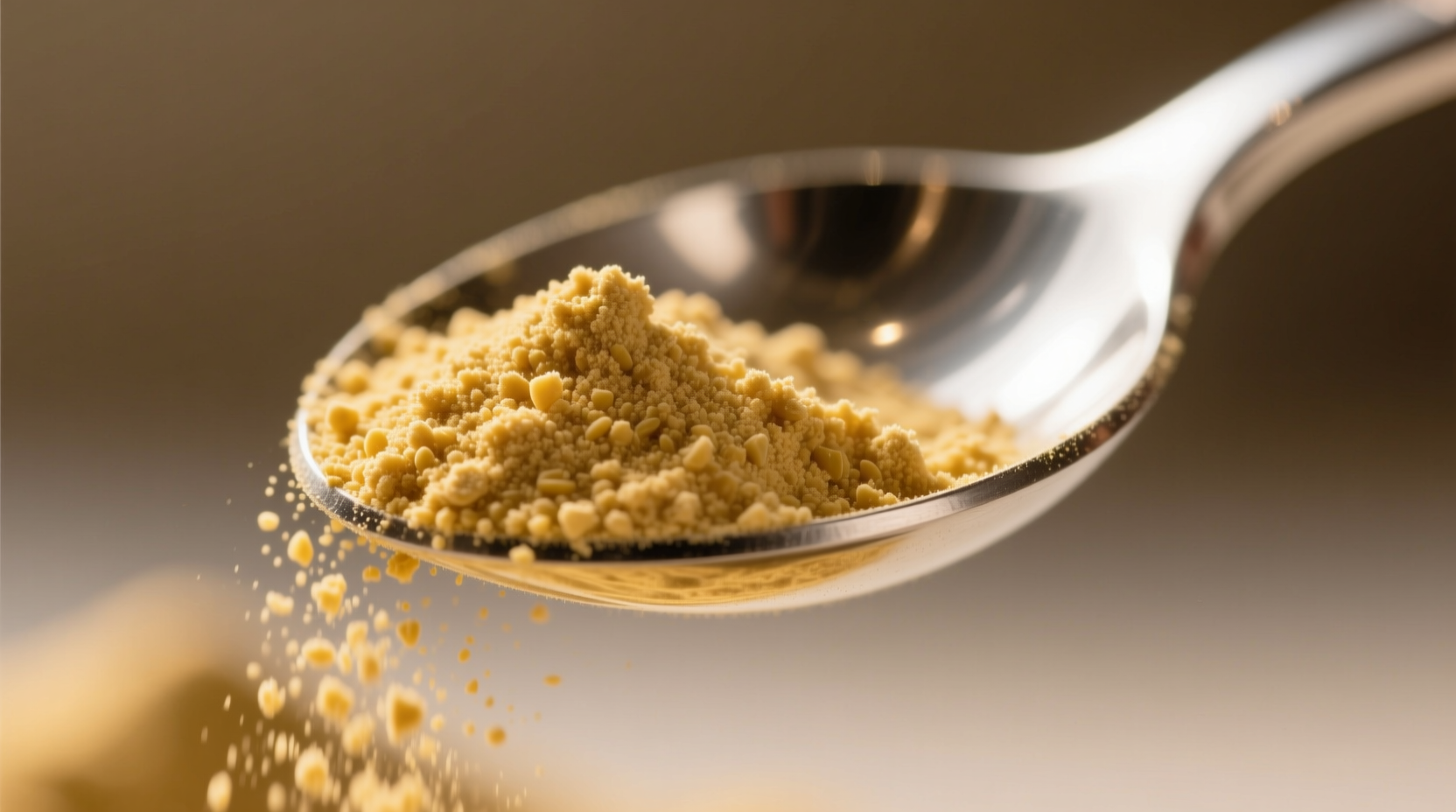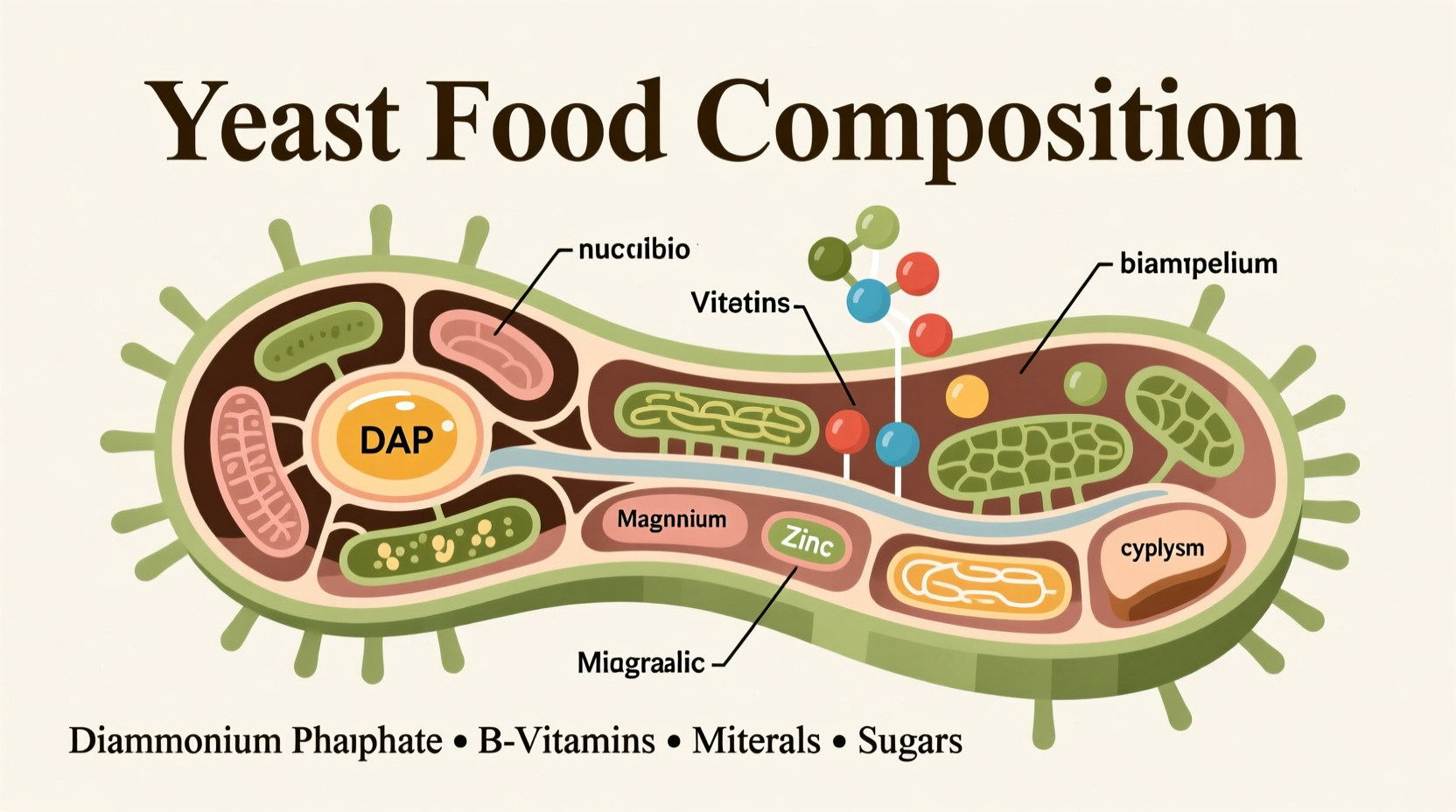Ever wondered what gives your homemade beer that perfect fermentation or helps your sourdough starter thrive? Understanding what yeast food is made of unlocks the science behind successful baking and brewing. This guide reveals the precise nutritional components yeast needs to perform optimally, helping you achieve consistent results whether you're crafting artisan bread or fermenting craft beverages.
The Science Behind Yeast Nutrition
Yeast, specifically Saccharomyces cerevisiae, requires specific nutrients to convert sugars into carbon dioxide and alcohol efficiently. Unlike plants or animals, yeast cannot synthesize all necessary compounds on its own. When natural nutrient levels in wort (for brewing) or dough (for baking) fall short, fermentation slows or stalls completely.
According to research from the American Society for Microbiology, yeast requires 17 essential elements for proper growth and metabolism. The most critical deficiencies occur with nitrogen sources and vitamin B1 (thiamine), which explains why commercial yeast nutrients focus on these components.
| Nutrient Category | Primary Compounds | Natural Sources | Commercial Forms |
|---|---|---|---|
| Nitrogen Sources | Diammonium phosphate, amino acids | Malted grains, fruit pulp | DAP, Fermaid O, Fermaid K |
| Vitamins | Thiamine (B1), biotin, pantothenic acid | Fruit skins, wheat germ | Yeast hulls, vitamin blends |
| Minerals | Magnesium, zinc, potassium | Water minerals, honey | Epsom salt, mineral blends |
| Carbohydrates | Glucose, maltose | Sugars, starches | Dextrose, malt extract |
Core Components of Commercial Yeast Food
Professional yeast nutrients contain carefully balanced formulations that address specific fermentation challenges. Let's examine each component in detail:
Nitrogen Sources: The Building Blocks
Nitrogen represents yeast's most critical nutritional need, comprising approximately 9% of yeast cell mass. Diammonium phosphate (DAP) provides readily available nitrogen that yeast converts into amino acids. University of California, Davis research shows that proper nitrogen levels can increase fermentation speed by up to 40% while reducing off-flavors.
Home bakers often use alternative nitrogen sources like potato water or wheat germ, though these provide less consistent results than commercial nutrients. The USDA's Agricultural Research Service confirms that nitrogen-deficient environments cause yeast to produce higher levels of hydrogen sulfide, creating unpleasant 'rotten egg' aromas in finished products.
Vitamin Complex: The Metabolic Catalysts
Thiamine (vitamin B1) plays a particularly crucial role in yeast metabolism, serving as a cofactor for enzymes that break down sugars. Without adequate thiamine, yeast cannot efficiently process carbohydrates regardless of sugar availability.
Commercial yeast nutrients often include yeast hulls (ghosts), which are the empty cell walls from processed yeast. These provide not only vitamins but also lipids and sterols that strengthen new yeast cell membranes. A 2023 study published in the Journal of the American Society of Brewing Chemists demonstrated that yeast hull supplementation reduced stuck fermentations by 63% in high-sugar environments.

Practical Applications for Home Brewers and Bakers
Understanding what yeast food is made of helps you determine when and how to use it effectively:
Brewing Applications
For home brewers, yeast nutrient becomes essential when working with:
- Fruit wines (which are typically nitrogen-deficient)
- High-gravity beers (above 1.080 OG)
- Mead production (honey lacks sufficient nitrogen)
The Brewers Association recommends adding 1-2 grams of yeast nutrient per gallon at the start of fermentation, with a possible second addition at high krausen (peak fermentation activity). This timing ensures nutrients are available when yeast needs them most.
Baking Applications
While commercial bakers rarely add separate yeast nutrients, artisan bakers working with sourdough or whole grain flours benefit from understanding yeast nutrition. Whole grains contain phytic acid, which binds essential minerals needed by yeast.
A simple solution is adding 1-2 teaspoons of diastatic malt powder per loaf, which provides both enzymes to break down complex carbohydrates and natural nutrients. Alternatively, incorporating potato water (from boiled potatoes) into dough provides potassium and other minerals that boost yeast activity.
Creating Your Own Yeast Nutrient Blend
You can make an effective DIY yeast nutrient using common kitchen ingredients:
Basic Homebrew Nutrient Blend
- 50% diammonium phosphate (available at homebrew stores)
- 25% yeast hulls
- 25% magnesium sulfate (Epsom salt)
Use 1 teaspoon per 5 gallons of wort at the start of fermentation. For fruit wines, increase to 1.5 teaspoons per gallon.
Simple Baking Boost
Mix 1 tablespoon of wheat germ, 1 teaspoon of honey, and 1 cup of warm potato water. Substitute this for regular water in your bread recipe to provide natural yeast nutrients.
Common Misconceptions About Yeast Food
Several myths persist about yeast nutrition that can lead to fermentation problems:
- Myth: Sugar alone is sufficient yeast food
Reality: While sugar provides energy, yeast requires nitrogen and vitamins to build cell structures. Excess sugar without nutrients causes stressed fermentation. - Myth: All yeast nutrients are the same
Reality: Different formulations target specific deficiencies. DAP provides nitrogen but lacks vitamins, while complex nutrients offer balanced profiles. - Myth: More nutrients always improve fermentation
Reality: Over-supplementation can create off-flavors and imbalanced fermentations. Follow recommended dosages carefully.
Remember that yeast food isn't necessary for all fermentation projects. Standard bread doughs and many beer worts contain sufficient natural nutrients. Reserve supplemental nutrients for challenging fermentations where yeast would otherwise struggle.











 浙公网安备
33010002000092号
浙公网安备
33010002000092号 浙B2-20120091-4
浙B2-20120091-4